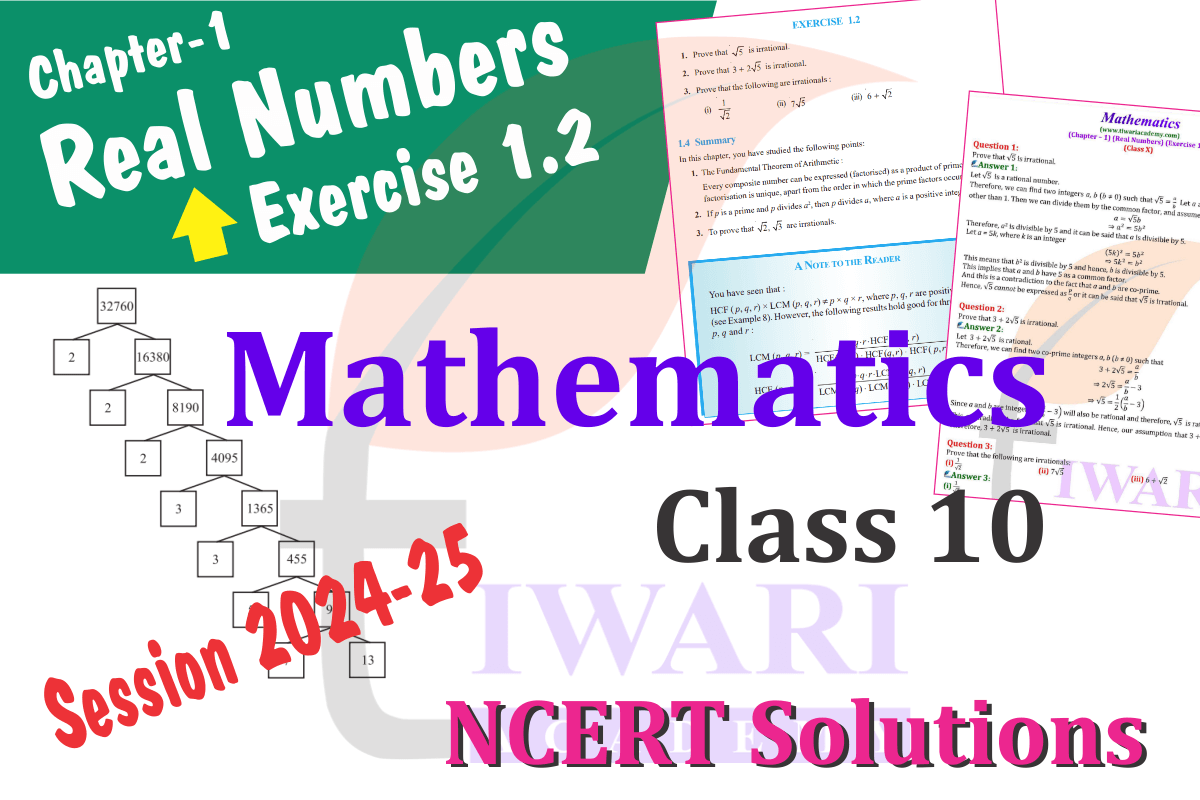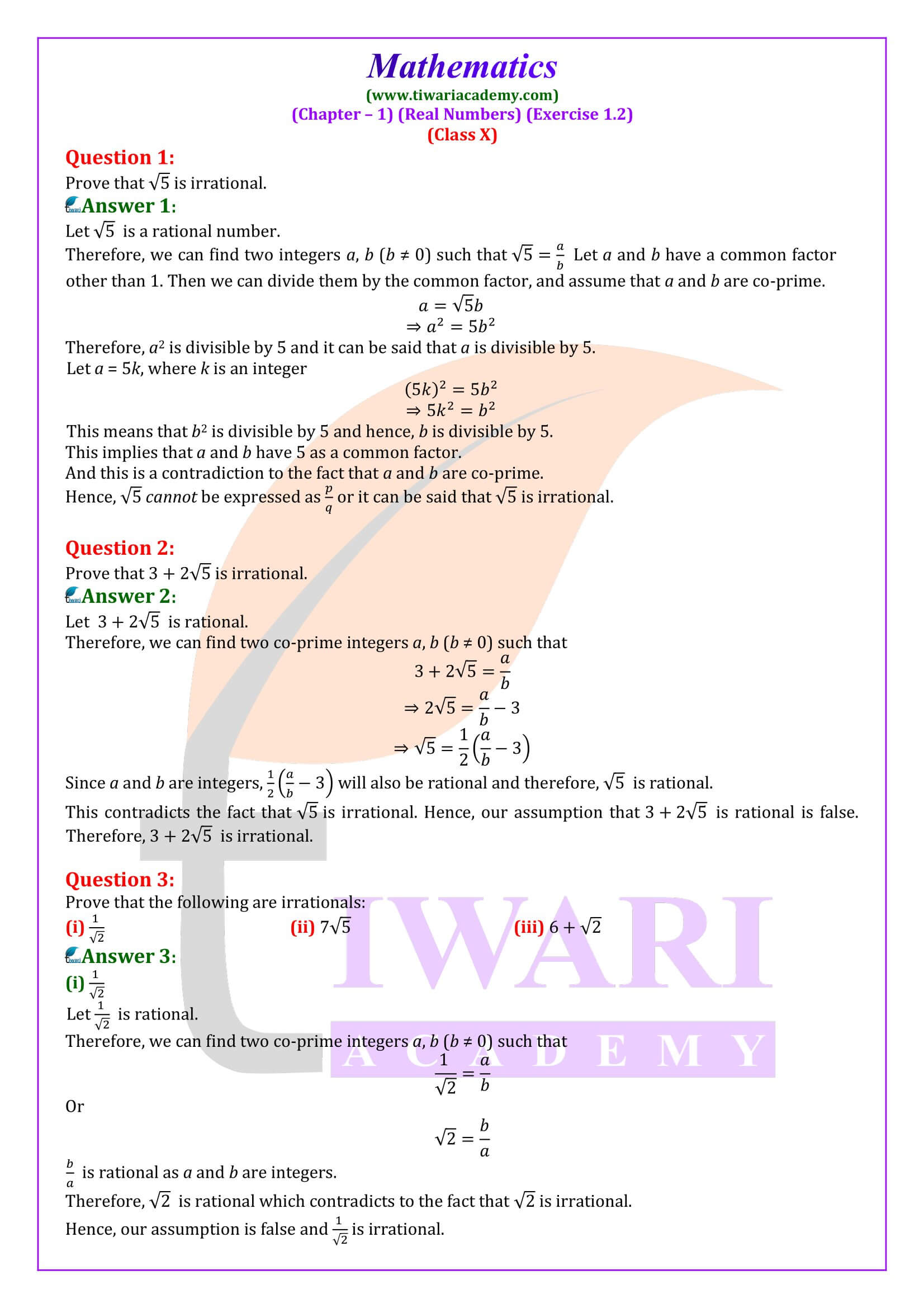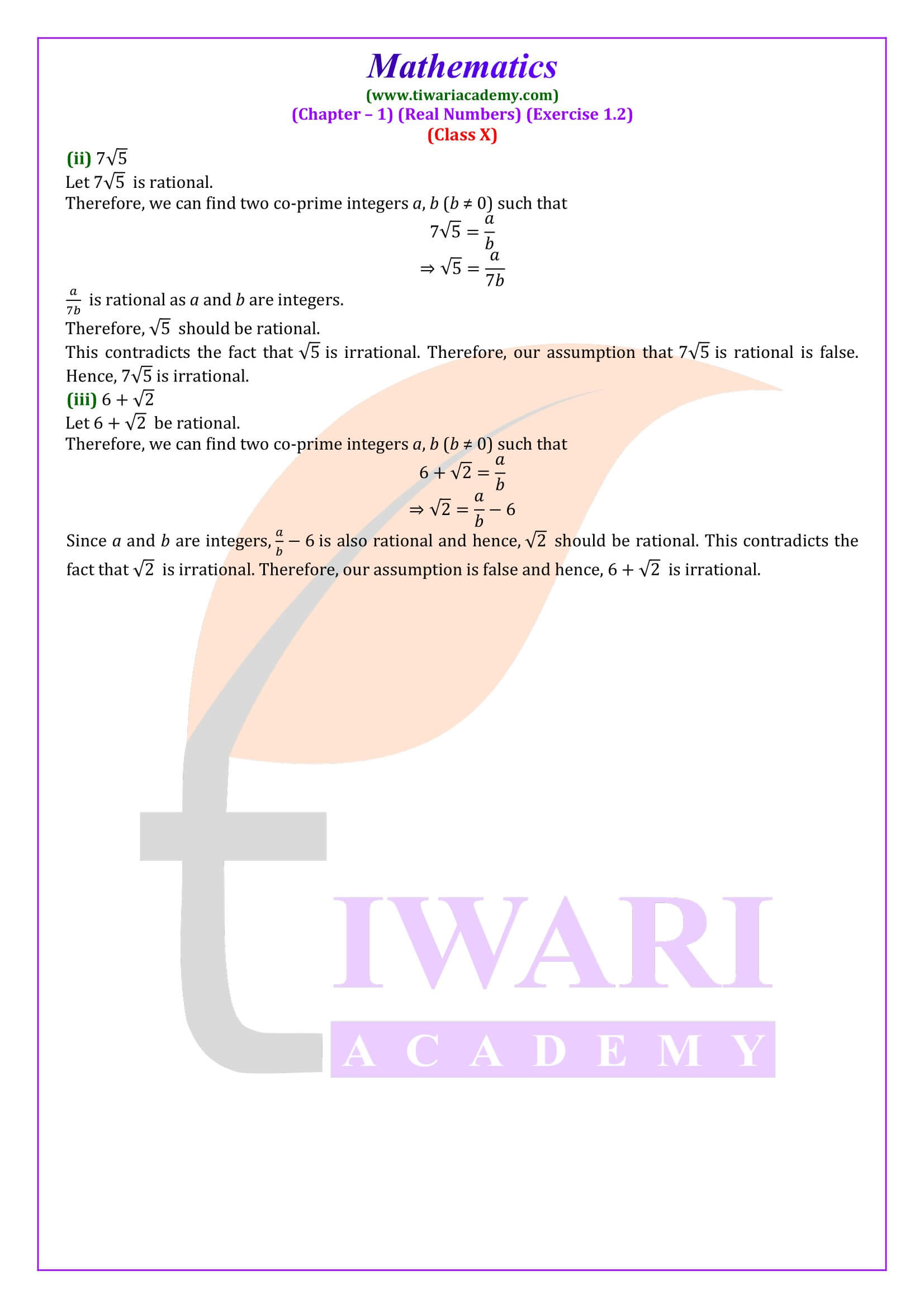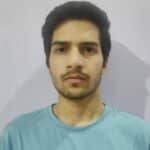NCERT Solutions for class 10 Maths Chapter 1 Exercise 1.2 (Ex. 1.2 Class 10) Real numbers in Hindi Medium and English Medium modified and revised for session 2024-25. These solutions are also available in Video Format updated for 2024-25 board annual exams based on new NCERT books.
| Class: 10 | Mathematics |
| Chapter 1: | Exercise 1.2 |
| Chapter Name: | Real Numbers |
| Content Type: | Text, Images, PDF and Videos |
| Academic Year: | Session 2024-25 |
| Medium: | English and Hindi Medium |
NCERT Solutions for class 10 Maths Chapter 1 Exercise 1.2
UP Board students are also using the same NCERT Textbooks as the CBSE students. So, they also can use these solutions for their help. Here, they can download UP Board Solutions for class 10 Maths Chapter 1 Exercise 1.2 in Hindi and English Medium. Videos solutions contains the simple explanation of all the questions. All NCERT Solutions Apps and NCERT Solutions are updated according to latest CBSE / NCERT Curriculum 2024-25 for UP Board, Gujrat Board as well as CBSE Board students. Download all the digital contents in PDF or study online.

10 Maths Chapter 1 Exercise 1.2 Solutions
NCERT Solutions for class 10 Maths Chapter 1 Exercise 1.2 Real numbers in English medium as well as Hindi Medium to online use or download for offline use. If you need to download in PDF form, link is given on the page or visit Class X Maths Chapter 1 Solutions main page.
Important Questions for Practice – REAL NUMBERS
- Show that 12^n cannot end with the digit 0 or 5 for any natural number n.
- Without actual performing the long division, find if 395/10500 will have terminating or non-terminating (repeating decimal expansion.) [Answer: Non-terminating repeating]
- A rational no in its decimal expansion is 327. 7081. What can you say about the prime factors of q, when this number is expressed in the form of p/q? Give reasons. [Answer: Denominator is the multiple of 2’s and 5’s]
- What is the smallest number by which √5 – √2 is to be multiplied to make it a rational number? Also find the number so obtained? [Answer: √5 + √2, 3]
- Find one rational and one irrational no between √3 and √5. [Answer: Rational number = 1.8, Irrational number = 1.8088088808888…]
- Show that square of any odd integer is of the form 4m + 1, for some integer m.
- Show that the square of any positive integer is either of the form 4q or 4q + 1 for some integer q.
QUESTIONS FROM BOARD PAPERS
- Three sets of English, Hindi and Mathematics books have to be stacked in such a way that the books are stored topic wise and the height of each stack is same. The number of English books is 96, the number of Hindi books is 240 and the number of Mathematics books is 336. Assuming that the books are of same thickness, determine the number of stacks of English, Hindi and Maths books. [Answer: English = 2, Hindi = 5, Maths = 7]
- Find HCF and LCM of 56 and 112 by prime factorization method. [Answer: HCF = 56, LCM = 112]
3. Solve √45 × √20 and state what type of number is this (Rational number or irrational number). [Answer: 30, Rational number]
Important Questions of 10th Maths Exercise 1.2
HCF of 144 and 198 is (a) 9 (b) 18 (c) 6 (d) 12. [CBSE 2020] [Maths Basic]
144 = 2 x 2 x 2 x 2 x 3 x 3 = 2^4 x 3^2
198 = 2 x 3 x 3 x 11 = 2 x 3^2 x 11
HCF = 2 x 3 x 3 = 18
Hence, Option (b) is correct.
How do we find the HCF using prime factorisation?
In Prime factorisation, the HCF is the product of the smallest power of each common prime factor in the numbers.
How do we find the LCM using prime factorisation?
In Prime factorisation, the LCM is the product of the greatest power of each prime factor, involved in the numbers.
What is the relation between HCF, LCM and the two numbers?
For any two positive integers a and b, HCF (a, b) × LCM (a, b) = a × b.
4. Find the HCF of 56, 96, 324 by Euclid’s algorithm. [Answer: 4]
5. Show that the cube of any positive integer is of the form 4m, 4m + 1 or 4m + 3 for some integer m.
6. Prove that √3 is an irrational number.
7. State fundamental theorem of Arithmetic and hence find the unique factorization of 120. [Answer: 2×2×2×3×5]
How many questions are there in exercise 1.2 of class 10th Maths chapter 1?
There are in all 3 questions in exercise 1.2 of class 10th mathematics chapter 1 (Real numbers) and in every question students have to prove that the given number is irrational.
How many examples are in exercise 1.2 Class 10 Maths?
3 examples are based on exercise 1.2 (chapter 1 Real numbers) of class 10th mathematics. Example 9 and question 1 are same, example 10 and questions 2, 3(iii) are of same type and example 11 and question 3(ii) are same.
What are the Important and difficult questions from exercise 1.2 of 10th Maths?
All questions of exercise 1.2 of class 10th mathematics chapter 1 (Real numbers) are important and difficulty level of questions varies from student to student. But question which most of students find little difficult is Q1.
Is exercise 1.2 of class 10th mathematics chapter 1 based on theorems?
Yes, Exercise 1.2 of class 10th mathematics chapter 1 (Real numbers) is based on Theorem 1.2 (Let p be a prime number. If p divides a^2 , then p divides a , where a is positive integer) and Theorem 1.4 (√2 is irrational).







